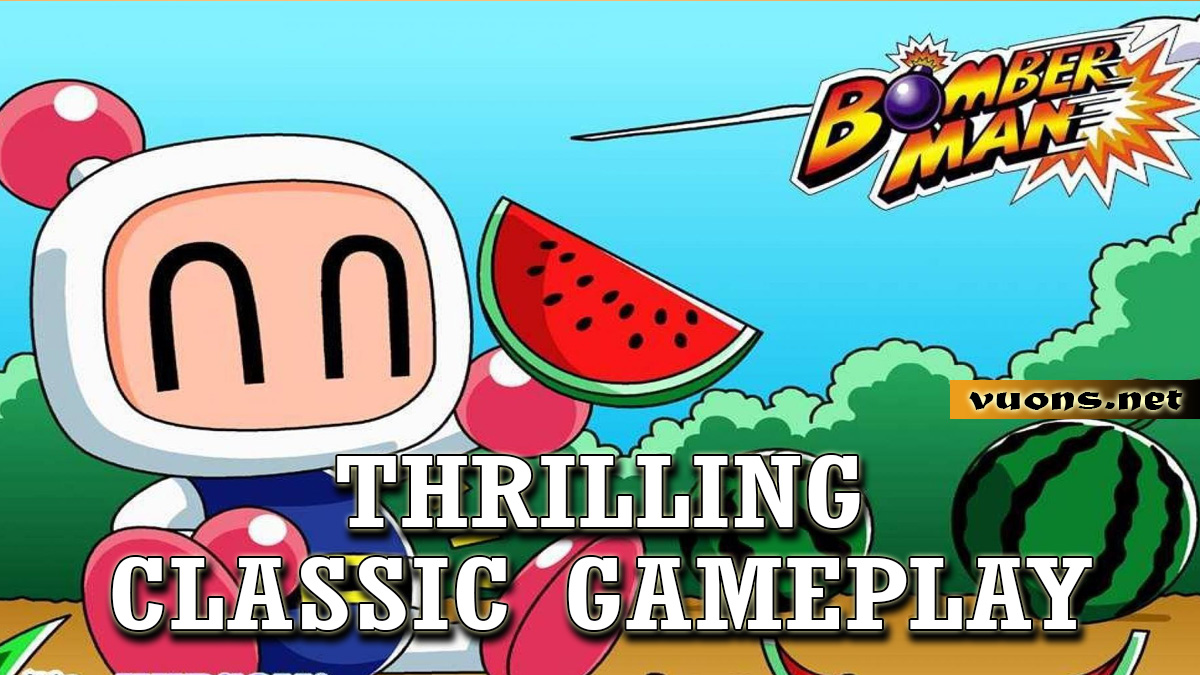Bomberman: From Classic Console To Modern Platform
Brief History of Bomberman: Its Beginnings and Development
Bomberman is one of those iconic games that has become an important part of video game history. First released by Hudson Soft in 1983 for the PC-88 platform, Bomberman immediately attracted the attention of players thanks to its simple but addictive concept. Players control a character who plants bombs to destroy enemies and open a path to the exit in a maze full of obstacles.
Initial success on the PC-88 encouraged Hudson Soft to expand Bomberman to various other consoles. In 1985, Bomberman was released for the Nintendo Entertainment System (NES), marking the beginning of its global popularity. This NES version introduced new gameplay elements and a multiplayer mode that allowed two players to compete simultaneously, adding to the game’s appeal among gaming fans.
As technology develops, Bomberman continues to innovate. In the 16-bit era, Super Bomberman was released for the Super Nintendo Entertainment System (SNES) in 1993. This version featured more advanced graphics and supported up to four players using the Multi-Tap accessory, making the gaming experience more exciting and competitive. This innovation helped strengthen Bomberman’s position as one of the best multiplayer games of its time.
Bomberman also expanded to 32-bit and 64-bit consoles, such as the PlayStation and Nintendo 64, with titles offering more in-depth story modes and innovative power-ups. With the advent of modern platforms, Bomberman is available on PC and mobile devices, allowing players to enjoy the game anytime and anywhere.
Recent adaptations include “Bomberman Live” for Xbox Live Arcade and various versions for the latest consoles, showing that Bomberman remains relevant and continues to adapt with the times. From humble beginnings to global icon, Bomberman has undergone a remarkable evolution, maintaining its appeal across generations of players.
Transition to the 16-bit Generation: Graphic and Gameplay Evolution
The transition from the 8-bit to the 16-bit era in the gaming industry brought significant changes in graphical quality and gameplay, including to many classic titles. This change was marked by increased hardware capabilities on consoles such as the Super Nintendo Entertainment System (SNES) and Sega Genesis, which allowed games to display sharper visuals, smoother animations, and richer environmental details.
In the 16-bit era, games not only got graphical improvements but also an evolution in gameplay. For example, Super Mario World on the SNES represented a huge leap in level design and gameplay complexity compared to its NES predecessor. Characters have more dynamic movements, environments are more interactive, and the game world feels more alive.
Sonic the Hedgehog on the Sega Genesis is another example of this evolution. Sonic introduces a speed and fluidity to gameplay that was previously impossible to achieve. More advanced graphics allow for creative and challenging level design, with exciting visual effects and a variety of innovative power-ups.
In addition to technical improvements, the 16-bit era also saw developments in narrative and game design. RPGs like Final Fantasy VI and Chrono Trigger on the SNES offered complex, deep stories, developed characters, and expansive worlds to explore. 16-bit graphics allow for stronger visual expression, making players more connected to the story and characters.
The transition to the 16-bit generation changed the face of the gaming industry, bringing major improvements in graphics, gameplay, and narrative. This marked an era where games became more than just simple entertainment, but also a medium capable of conveying complex stories and immersive gaming experiences. With these innovations, the 16-bit era set new standards that influence gaming development to this day.
Reboots and Remakes: An Attempt to Resurrect the Bomberman Classic
Bomberman, one of the icons in the gaming world, continues to experience reincarnation through various reboots and remakes. The initiative aims to maintain Bomberman’s classic charm while adapting to modern technology and player tastes.
One prominent example is “Super Bomberman R” for Nintendo Switch, which brings back the multiplayer fun of Bomberman with updated visuals and additional features like a story mode. This game not only meets the expectations of old fans with its distinctive gameplay, but also captivates the new generation with more advanced graphic elements.
Other adaptations include versions of “Bomberman Live” for Xbox and “Bomberman Ultra” for PlayStation Network, which offer intense online multiplayer experiences. This allows players to compete in bombastic battles against opponents from all over the world, following in the footsteps of Bomberman’s successful multiplayer dating back to the classic era.
Not only on consoles, Bomberman is also successful in the mobile world with titles such as “Bomberman Blitz” and “Bomberman Touch: The Legend of Mystic Bomb”. These games utilize touch screens to provide intuitive controls, so players can enjoy Bomberman action anywhere.
Bomberman reboots and remakes are not just nostalgia, but also ongoing efforts to maintain the franchise’s relevance and appeal in the modern era. By continuing to adapt classic elements with the latest innovations, Bomberman continues to strengthen his position as one of the most iconic characters in video game history.
Multiplayer Bomberman: The Evolution from Local to Online
Bomberman has set a high standard for multiplayer experiences since its classic console era. Initially, Bomberman’s gameplay was aimed at local multiplayer, where two to four players could compete or cooperate in arenas consisting of mazes and bombs.
With the development of technology and the internet, Bomberman evolved from local to online multiplayer. On modern consoles such as PlayStation, Xbox, and Nintendo Switch, Bomberman has provided an online multiplayer mode that allows players to play against other players from all over the world. This brings a new dynamic to competition, with players able to test their skills against potentially different opponents in each match.
These online features also expand opportunities to participate in global tournaments and competitions. Bomberman has become one of the most popular games in the esports community, where players can compete in official tournaments or even community events held online.
In addition, the adaptation of Bomberman for mobile platforms also integrates online multiplayer features successfully. Games like “Bomberman Blitz” and “Bomberman Touch: The Legend of Mystic Bomb” allow players to compete against other players around the world using their mobile devices, making Bomberman accessible anywhere and anytime.
Bomberman’s evolution from local to online multiplayer not only keeps pace with technological developments, but also broadens the game’s appeal and fan community. While maintaining the essence of a fun and competitive game, Bomberman continues to be one of the top choices for those looking for a thrilling and exciting multiplayer experience.




